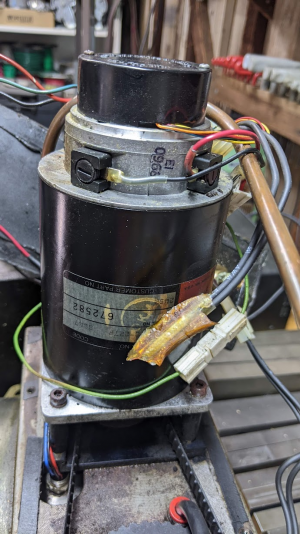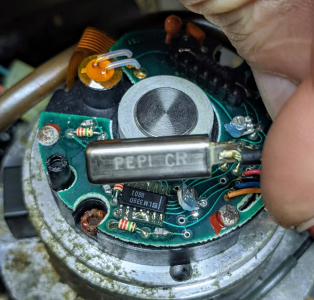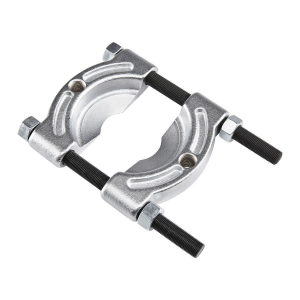- Joined
- Feb 15, 2022
- Messages
- 45
I've been working through a Haas HRT9 that I picked up at auction a few months back. I need to replace the servo motor and the replacement I found is correct except that it has a tachometer, the type with its own commutator and windings riding on the motor shaft.
As you'll see in the pictures below, the tach rides on a 5/8 OD hollow shaft that surrounds the 1/2" motor shaft. I can't quite get visual access to the end of the 5/8'' portion because it is hidden by the brush holder, which cannot be removed without removing the tach (I think).
My first thought is to use a gear puller to pull the tachometer and 5/8" shaft off the motor shaft. Before just going for it, could someone confirm whether this would be the best way to go at it or should I try something else? Should I use any heat? Should I try to remove any of the blue epoxy towards the bottom of the 5/8" section?
I appreciate any help offered.
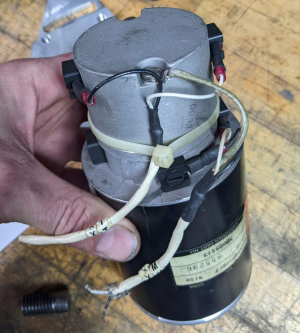
This is the entirety of the tachometer. The rest below it is the motor.
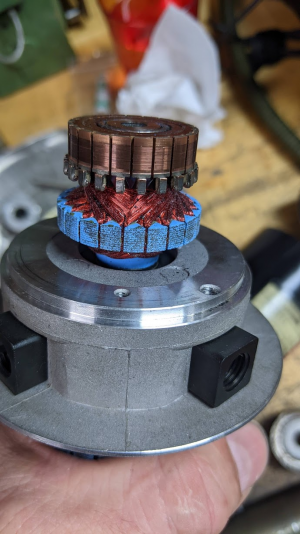
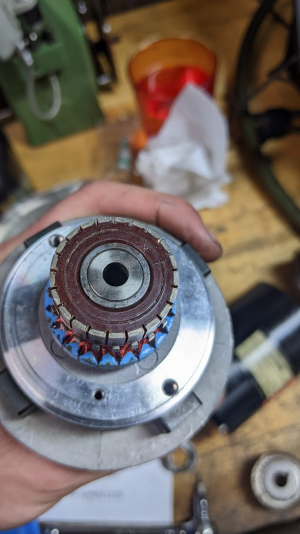
As you'll see in the pictures below, the tach rides on a 5/8 OD hollow shaft that surrounds the 1/2" motor shaft. I can't quite get visual access to the end of the 5/8'' portion because it is hidden by the brush holder, which cannot be removed without removing the tach (I think).
My first thought is to use a gear puller to pull the tachometer and 5/8" shaft off the motor shaft. Before just going for it, could someone confirm whether this would be the best way to go at it or should I try something else? Should I use any heat? Should I try to remove any of the blue epoxy towards the bottom of the 5/8" section?
I appreciate any help offered.

This is the entirety of the tachometer. The rest below it is the motor.




